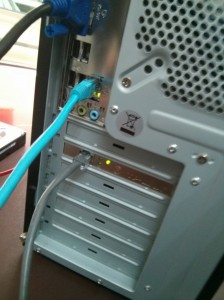If your new server has two network interfaces use both in bonding can help you to get a better performance or failover tolerance.
If you want to create a bonding device first you need to disable network manager.
systemctl stop NetworkManager.service
systemctl disable NetworkManager.servicesystemctl enable network.service
systemctl start network.service
Now you need to configure your network interfaces
ip link show
is the way to get your devices list
1: lo: <LOOPBACK,UP,LOWER_UP> mtu 65536 qdisc noqueue state UNKNOWN mode DEFAULT
link/loopback 00:00:00:00:00:00 brd 00:00:00:00:00:00
2: p33p1: <BROADCAST,MULTICAST,UP,LOWER_UP> mtu 1500 qdisc pfifo_fast state UP mode DEFAULT qlen 1000
link/ether ca:fe:ca:fe:ca:fe brd ff:ff:ff:ff:ff:ff
3: p2p1: <BROADCAST,MULTICAST> mtu 1500 qdisc pfifo_fast state DOWN mode DEFAULT qlen 1000
link/ether ca:fe:ca:fe:ca:ff brd ff:ff:ff:ff:ff:ff
in my case I have two network cards p33p1 and p2p1
If i move to /etc/sysconfig/network-scripts and make a ls i will see two files
ifcfg-enp2s0 and ifcfg-enp3s0
edit both files to appear like these
BOOTPROTO=none
NAME=<device name>
UUID= <leave as is>
HWADDR=<leave as is>
NM_CONTROLLED=”no”
MASTER=”bond0″
SLAVE=”yes”
Creating bond interface
create a file /etc/modprobe.d/bonding.conf with the content
alias bond0 bonding
Create a file in /etc/sysconfig/network-scripts/ifcfg-bond0
DEVICE=bond0
BOOTPROTO=dhcp
ONBOOT=yes
BONDING_OPTS=”mode=0 ”
USERCTL=no
NM_CONTROLLED=”no”
reboot your system and enjoy 😛
